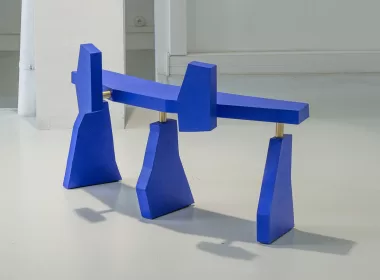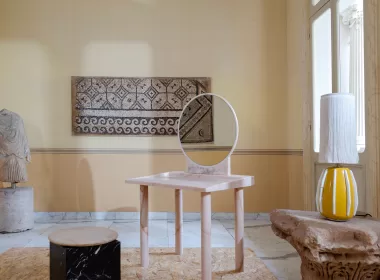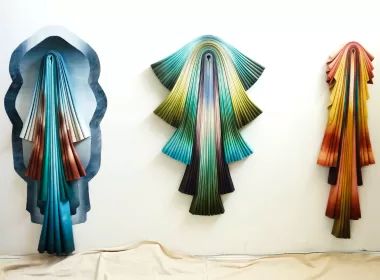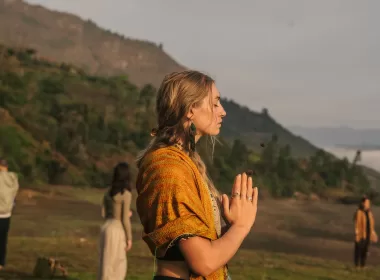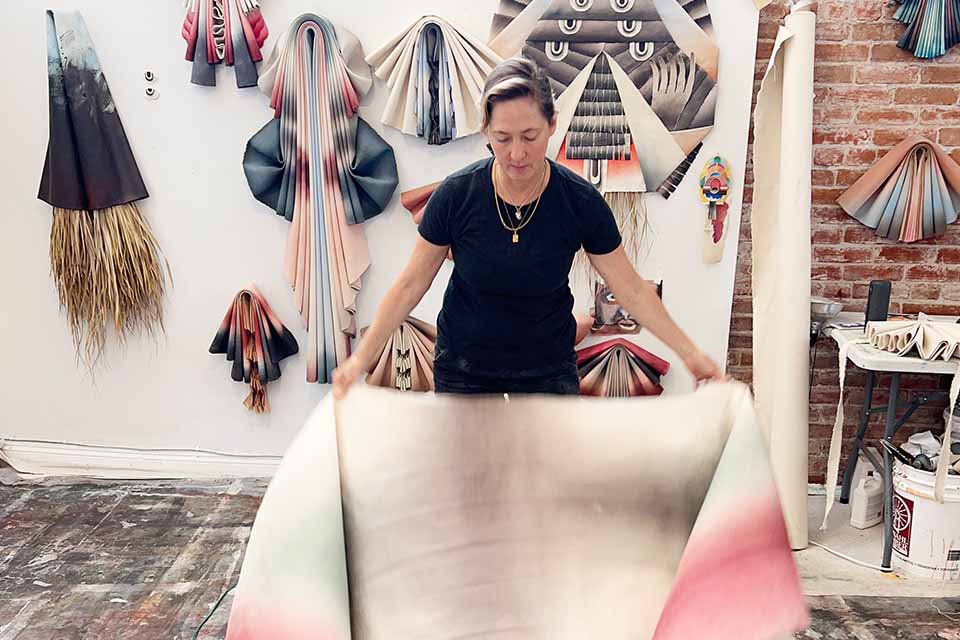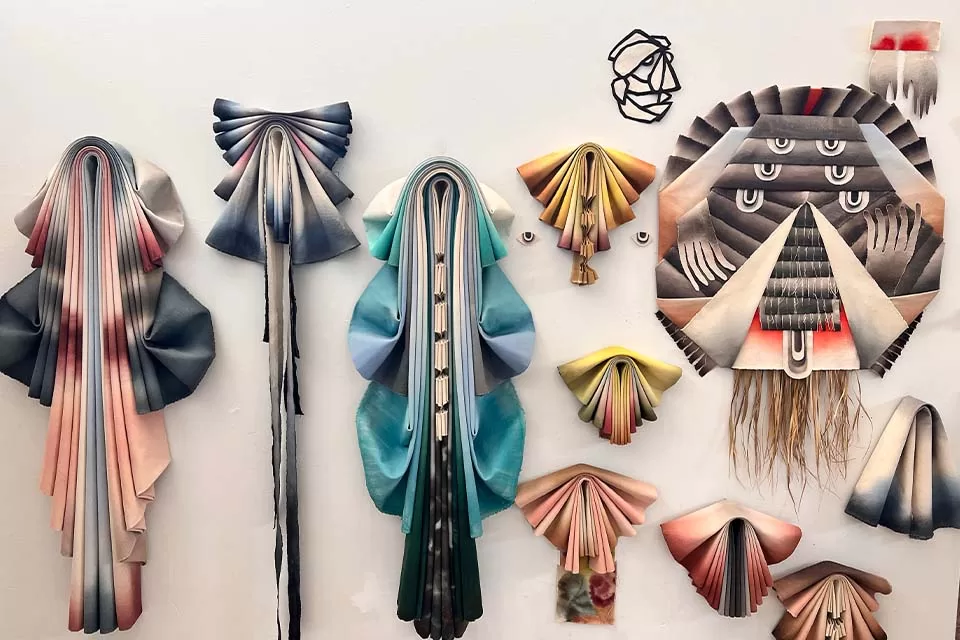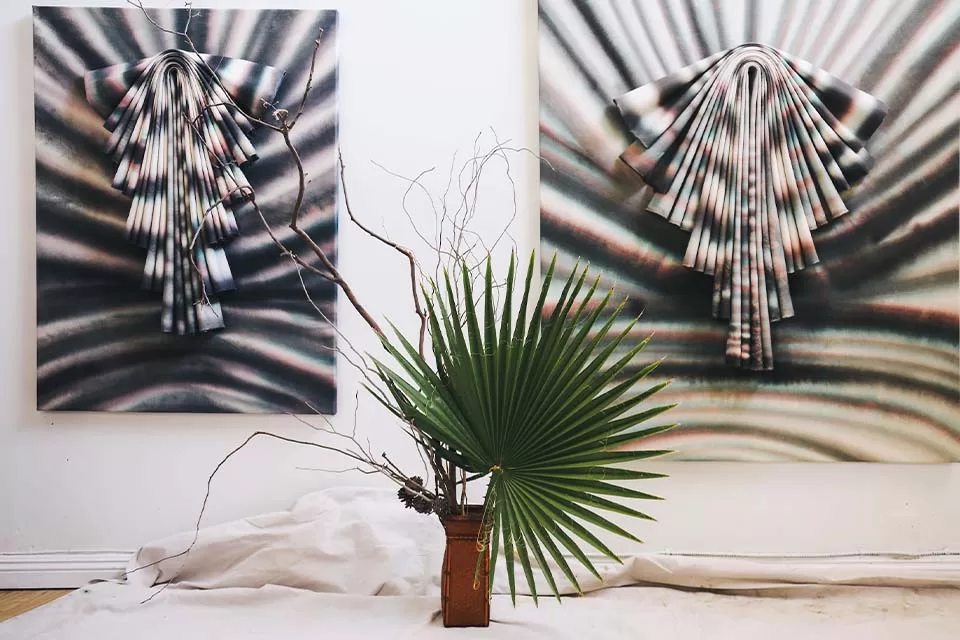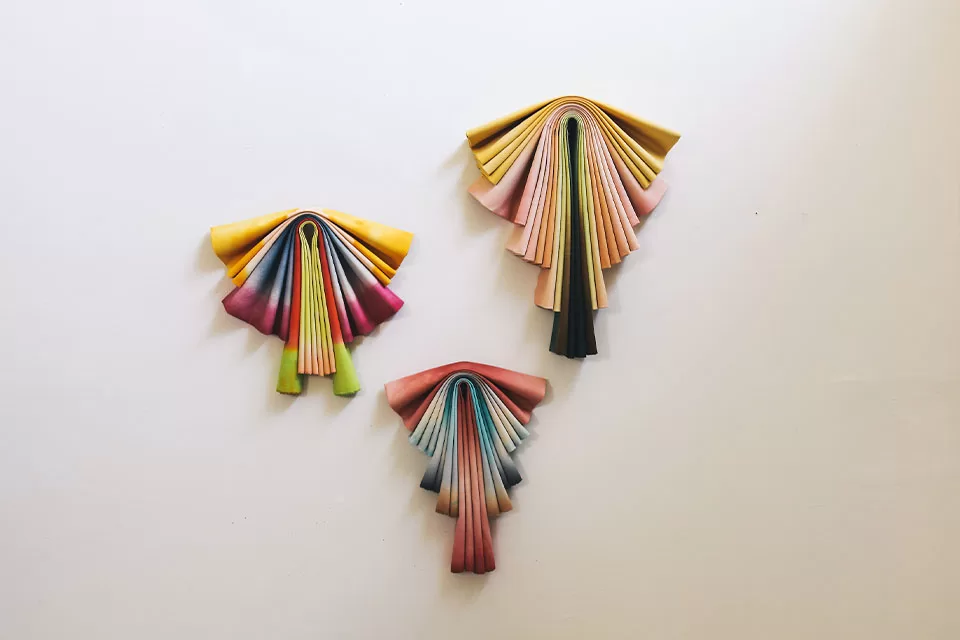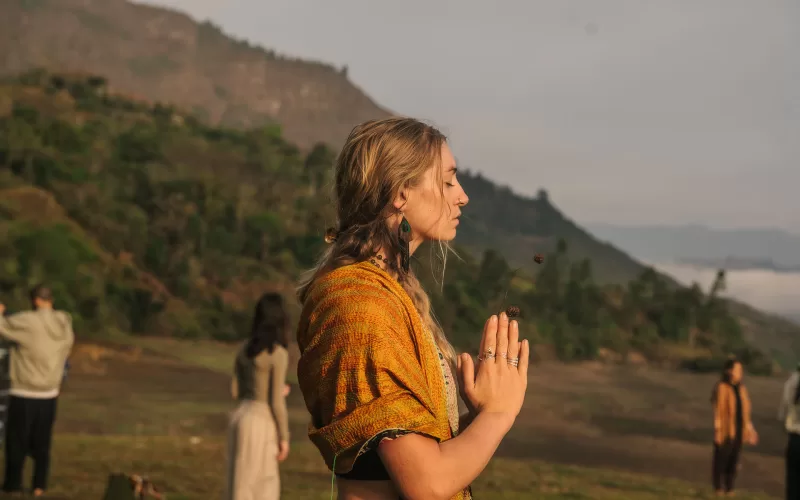Very often it feels like the Los Angeles art scene is small. Showings feel like singular events that make the fact that there is a community of artists in the city not seem true. However, this summer the city’s art community decided to show themselves in full force hosting Los Angeles’ first ever design weekend. One of the artists featured in this event is Susan Maddux.
Maddux’ work stands out when displayed because her work literally comes off the wall. Maddux’ work can best be described as sculptural paintings. The series she presented at the Los Angeles design weekend is called “Wet Drapery.” The series features canvases which have been molded into careful bends and curves making the paintings come forward and seem as if they will slowly drip down to the ground. These paintings are colorful, and completely capture the eye. Thus it was very exciting to speak with Susan Maddux to know more about her artistry.
You have become known for your sculptural paintings, did you start your art career focusing on sculptures or traditional canvas painting?
Susan Maddux – I was a very creative child, and without knowing anything about art I was intuitively drawn to making sculptural objects out of sticks and leaves and things I found in nature. Growing up, I drew and painted, took pictures, made movies, wrote, and was very into costume and clothing.
I attended the San Francisco Art Institute for painting, and experimented with different painting mediums and techniques for a couple of decades. I lived in New York, and in my studio practice. I was always searching for a way of doing things that I felt really connected to. Meanwhile, I had a career as a graphic and textile designer for fashion and beauty.
When did you start developing the idea of a sculptured canvas? Was your vision always the draped paintings that the public sees?
Susan Maddux – In 2012 I moved from NYC to LA, and I began to combine painting with textile and pattern design. My work as a designer helped me to see my paintings as material- and I started to explore what forms a “painting” could take. As a designer, I learned to look at an idea, turn it over and approach it from all different directions. I deconstructed my canvases, taking them off the stretcher bars. I cut them up, tore them, sewed and stapled them back together. I collaged, shaped, folded, and draped. I pushed myself to keep exploring different approaches. When I started working with the draped form, it was so simple but I immediately knew I had found something special.
Through this came a way of working that incorporated so many things I wanted to do. The process could flow like water, full of surprises and co-creation. I could be playful and experimental, balancing organic movement with structure.
You call your series “Wet Drapery,” in it we see colorful canvas folded down, occasionally it seems like multiple canvas layered. These canvases are colorful, and you always find a different arrangement for them to be presented in. These arrangements include incorporating a flat canvas, strips or circles of canvas, and rope. Have you used these works to represent an overall theme, or are they singular and connected through the method they were made?
Susan Maddux – “Wet Drapery” is the title of a solo show I recently had in Los Angeles. The work in it focused on highlighting the technique of wet on wet painting and the flowing draped folds that “conceal to reveal” – referring to the ancient practice of carving marble to resemble wet cloth hanging on a figure. These pieces are all variations on a theme. Most artists work within a set of rules as organizing principles, whether they realize it or not. In my practice, I can identify a few different bodies of work defined by the rules that they follow.
Variations on these organizing principles open up a whole world of meaning and ideas. Incorporating collage or other materials, mounting pieces on a stretched canvas or painted frames all change the focus and implications of the pieces in these different bodies of work.
I create according to what I am drawn to and what I want to feel. I went to Mexico a few years ago and came back wanting to see something less structured and more voluminous, with a sense of almost flowing lightness. That yearning motivated me to create a whole new body of work. With both my hands and my heart, I am guided by the question: how does it feel?
Every piece you do is intentional. You have planned how the artwork will be taken in. How do you arrive at the decisive moment at creating a piece, and what influences your final product?
Susan Maddux – I think how we know a piece is finished is a very personal thing. Sometimes a piece will hang in my studio for months, and I’ll just look at it. Then one day I’ll try combining canvases from two different pieces, I’ll re-fold and re-paint, I’ll add something new. If it’s interesting, I’ll begin to obsess on it and the more it’s not quite working the more I’ll want to keep messing with it. I’ll do this until something comes together, or it becomes something else entirely.
A piece might be complete if everything fits together in a way that feels both cohesive and dynamic, with something about it that keeps me engaged and curious. Looking at the composition, when making any change will detract from the whole, then I stop. Eventually the piece tells me when it’s done.
When we see your art it brings to memory many other artists and styles before, but your execution is very fresh, and moves painting into a new space. In fact, when describing what your work is in a categorical sense a long explanation has to be said for others to understand. How does it feel to be a pioneer in this sense?
Susan Maddux – I have always looked for a unique way to express myself. As someone who has never felt comfortable with the limitations of one medium or form of expression, finding a way to combine painting and sculpture and anything else I want to play with into my work delights me. I’ve always felt that my best work exists outside basic parameters, and this idea of breaking boundaries and going past mental and societal limitations in terms of genre or possibility is very interesting to me.
You were born in Hawaii but are now based in Los Angeles. Your website says you come from a “hapu Japanese-American family,” and that you are influenced by “Japanese folk art, Buddhist temples, tropical flora, and the arts of Polynesia.” Can you tell us more about your personal background and influences? How has it impacted what you do?
Susan Maddux – The land in Hawaii is so alive. It’s a very powerful place. They call it the crossroads of the Pacific because of the people, goods, culture and ideas that are constantly moving through it from Asia to the Americas and back.
My family is local Japanese on one side, and American military on the other. My relationship to the culture of my family is tenuous, but the cultural mix of Hawaii is so rich. As a very pale half Japanese kid, I always felt like a bit of an outsider, and I was fascinated with Japanese culture. It held the allure of a connection to the past and to my ancestors, which I felt very disconnected from.
My work is also sort of a hybrid, combining painting and sculpture, fine art and my experience as a designer. References to Kimono or even ‘Ahu ‘ula, the Hawaiian feather cloak show up in my work. The environment of Hawaii has definitely influenced my use of color and pattern and perhaps most importantly my sensitivity to the spirit and energy coming through in the pieces themselves.
Most recently you participated in Los Angeles’ first design weekend where a group of artists from LA came together and presented their art around the city in the desire to represent the art community here. How did you become part of this event, and what did it mean for you to have a show here in comparison to somewhere else?
Susan Maddux – I heard about the LA Design Weekend a few weeks before it happened, and I emailed them to connect and see if there was anything I could do to help. I’ve learned to always reach out if I come across something I feel like I want to be a part of. Making the connection when I feel that attraction has been instrumental in getting me where I am today.
The organizers offered to put me on the studio tour schedule, and the entire event felt really generous and inspiring. The east side design scene is full of really talented people with independent studios and design companies somehow making it all work, and I’ve found a spirit of creativity and generosity that is so refreshing. Coming from both the art and design worlds, I feel like I’ve found a place between them that really supports what I’m doing.


